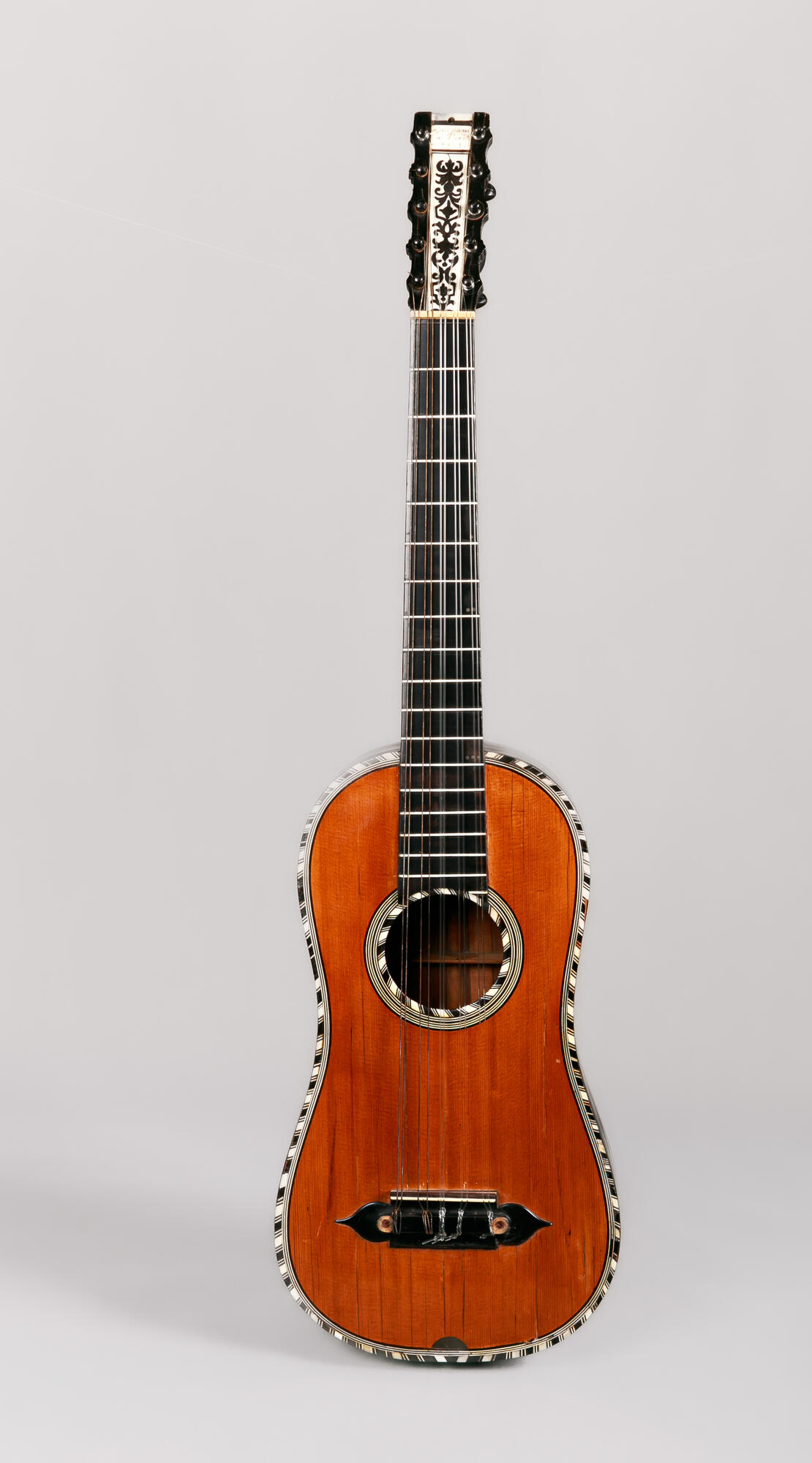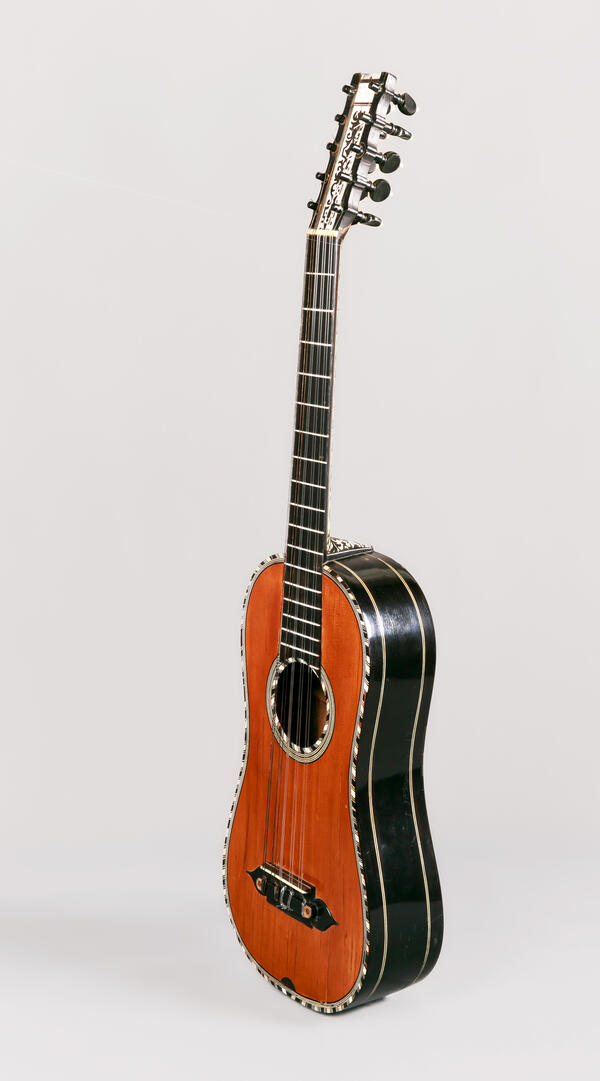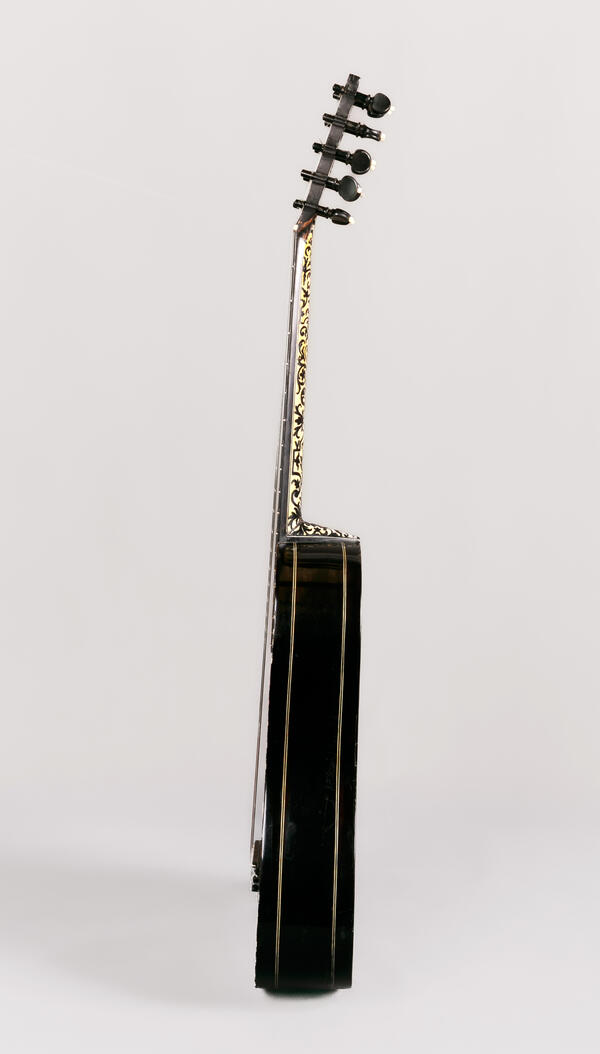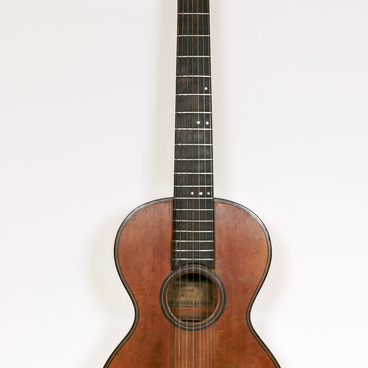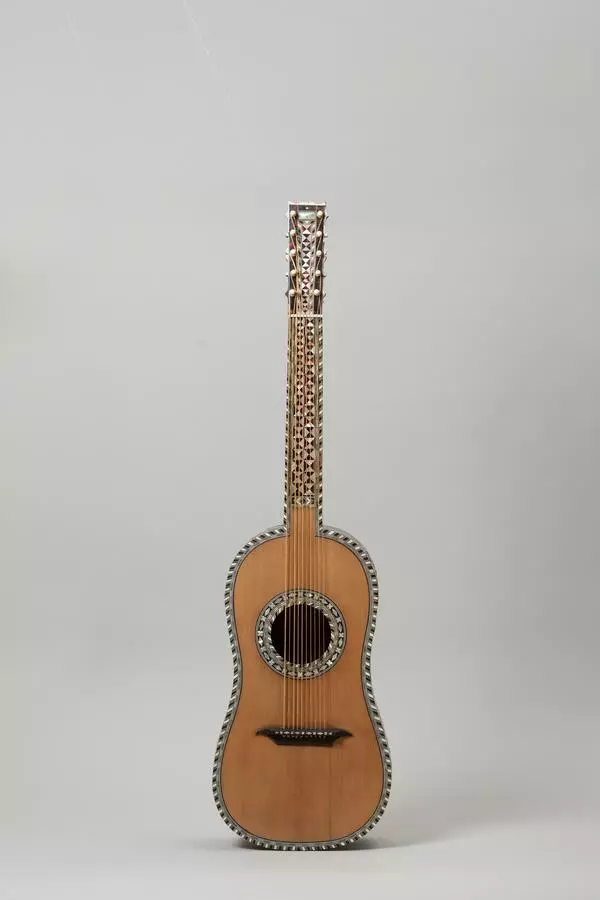In 1977, the Museum of Music received a guitar created by the French craftsman Jean-Baptiste Voboam. The Voboam dynasty of guitar makers worked in Paris between the 1630s and the 1730s. The first craftsman in the dynasty was René Voboam. The instruments created by the Voboam family are displayed in British and French museums.
Jean-Baptiste Voboam was a prominent representative of the guild of musical craftsmen. There are seven known guitars that he created between 1697 and 1730. These are Baroque instruments that differ significantly from classical six-string guitars.
Like the medieval lute, the Baroque guitar has five sets of two-string courses which is why this instrument is known as a five-course guitar. Moreover, the Baroque guitar is characterized by the rounded silhouette of its figure-eight shape. This guitar already has a slightly noticeable “waistline” that becomes more and more pronounced in later instruments.
The Baroque guitar has gut frets tied to the instrument. Similar to the lute, it also has wooden pegs with a conical shape. However, the pegbox is straight and not angled back like the lute pegbox. All these features can be seen in the guitars produced by the Voboam dynasty craftsmen. Jean-Baptiste’s guitar from the Museum of Music in Moscow is no exception.
Voboam craftsmen usually signed their guitars and inscribed the date of manufacture on the pegbox. Their instruments were decorated in a particular way. The soundboard and other parts of the guitar were edged with ivory and ebony diagonal inlays. The bridge was decorated with carved ebony veneer in the shape of flowers.
The Voboam craftsmen made both standard guitars and more luxurious instruments with tortoiseshell and mother-of-pearl inlays. Many of the 17th-century paintings and engravings, including the works of such painters as Jean-Antoine Watteau and Jean-Marc Nattier, reflect the popularity of the Voboam dynasty among musical instrument connoisseurs.
The five-course Baroque guitar remained popular for a very long time. Even in the late 18th century, when it was gradually replaced by the six-string guitar and other instruments, tablature albums were still published mostly for the five-course Baroque guitar. In the second half of the 20th century, the Baroque guitar experienced a revival of interest from musicians and listeners.
Jean-Baptiste Voboam was a prominent representative of the guild of musical craftsmen. There are seven known guitars that he created between 1697 and 1730. These are Baroque instruments that differ significantly from classical six-string guitars.
Like the medieval lute, the Baroque guitar has five sets of two-string courses which is why this instrument is known as a five-course guitar. Moreover, the Baroque guitar is characterized by the rounded silhouette of its figure-eight shape. This guitar already has a slightly noticeable “waistline” that becomes more and more pronounced in later instruments.
The Baroque guitar has gut frets tied to the instrument. Similar to the lute, it also has wooden pegs with a conical shape. However, the pegbox is straight and not angled back like the lute pegbox. All these features can be seen in the guitars produced by the Voboam dynasty craftsmen. Jean-Baptiste’s guitar from the Museum of Music in Moscow is no exception.
Voboam craftsmen usually signed their guitars and inscribed the date of manufacture on the pegbox. Their instruments were decorated in a particular way. The soundboard and other parts of the guitar were edged with ivory and ebony diagonal inlays. The bridge was decorated with carved ebony veneer in the shape of flowers.
The Voboam craftsmen made both standard guitars and more luxurious instruments with tortoiseshell and mother-of-pearl inlays. Many of the 17th-century paintings and engravings, including the works of such painters as Jean-Antoine Watteau and Jean-Marc Nattier, reflect the popularity of the Voboam dynasty among musical instrument connoisseurs.
The five-course Baroque guitar remained popular for a very long time. Even in the late 18th century, when it was gradually replaced by the six-string guitar and other instruments, tablature albums were still published mostly for the five-course Baroque guitar. In the second half of the 20th century, the Baroque guitar experienced a revival of interest from musicians and listeners.
